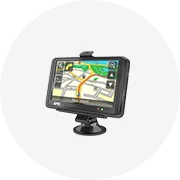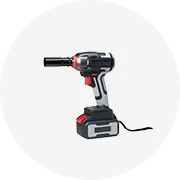Types of FJ Cruiser Snorkel
When it comes to FJ Cruiser snorkels, several specialized variants are available to enhance off-road capability. Each type offers distinct advantages depending on your specific needs and driving conditions.
Air Ram Snorkel
The most distinctive feature of this snorkel is its uniquely shaped air ram, engineered to deflect water and debris from the intake pipe using advanced airflow dynamics. Positioned high on the vehicle's A-pillar, it provides superior air quality in dusty or challenging off-road environments.
Key benefit: Includes a pre-filter system that removes larger particles before they enter the engine, significantly improving air quality and engine protection.
Toyota Land Cruiser V8 Snorkel
This specialized aftermarket accessory is specifically designed for Land Cruiser V8 models, enhancing off-road performance and engine protection in extreme conditions. By elevating the air intake position, it ensures clean, unimpeded airflow even during deep water crossings.
Key benefit: Features a built-in pre-air cleaner that effectively removes larger particles and moisture, resulting in superior engine performance and reduced maintenance costs.
Toyota Land Cruiser 70 Series Snorkel
Tailored for the rugged Land Cruiser 70 Series models, this snorkel is engineered to enhance off-road capability in challenging terrain. Its elevated intake position ensures the engine receives clean air regardless of environmental conditions.
Key benefit: Significantly improves engine longevity by preventing dust and debris ingestion, while providing reliable performance during water crossings.
Expert Tip: When selecting a snorkel type, consider not only your current off-road needs but also your future adventures. The right snorkel can dramatically extend your vehicle's capabilities in challenging environments like desert sand, muddy trails, and water crossings.
Snorkel Type Performance Comparison
Specifications and Maintenance of FJ Cruiser Snorkel
When considering an FJ Cruiser snorkel for your business inventory, understanding these key specifications will help you make informed purchasing decisions:
Materials
FJ Cruiser snorkels are primarily constructed from:
- High-grade UV-resistant polyethylene for exceptional durability and longevity
- Corrosion-resistant stainless steel components for mounting hardware
- Premium-grade rubber seals for watertight connections
These materials enable the snorkel to withstand extreme environmental conditions including intense sun exposure, saltwater, and temperature fluctuations.
Color Options
Available in multiple finish options to match vehicle aesthetics:
- Classic black (most popular)
- Arctic white
- Graphite/matte finish
- Dual-tone black and chrome accents
Some manufacturers offer color-matching services for custom applications.
Fitment Compatibility
While designed specifically for Toyota FJ Cruiser models, variations exist to accommodate:
- Different FJ Cruiser model years (2007-2014)
- Right-hand and left-hand drive configurations
- Various engine specifications
Size options range from standard to oversized designs based on specific airflow requirements.
Design Features
Design variations include:
- 4x4 raised air intake kits with 3.0-inch diameter tubing
- Multiple mounting options: side mount, pillar mount, or windscreen mount
- Specialized features like curved arms, aerodynamic air ram tops, and integrated splash guards
- Streamlined designs that complement vehicle aesthetics
Essential Maintenance Requirements
Educate your customers about these maintenance practices to ensure long-term satisfaction:
| Maintenance Task | Frequency | Procedure | Importance |
|---|---|---|---|
| Regular Inspection | Monthly | Check for signs of wear, cracks, or damage; replace any broken components | Critical |
| Rubber Seal Maintenance | Every 3 months | Inspect all rubber seals for deterioration; apply silicone lubricant to prevent drying | High |
| Thorough Cleaning | After off-road use | Remove air ram top; clean with mild soap and water; use soft brush for stubborn dirt | Medium |
| Hardware Inspection | Every 6 months | Check all mounting brackets and bolts for tightness; retorque if necessary | High |
| Surface Examination | Seasonally | Inspect for UV damage, cracks, or structural issues, particularly after extreme weather | Medium |
Important: Advise customers that proper maintenance significantly extends the lifespan of their FJ Cruiser snorkel and helps prevent costly engine damage. Regular inspection after water crossings is particularly crucial.
How to Choose an FJ Cruiser Snorkel
For wholesale buyers considering FJ Cruiser snorkels for their inventory, selecting the right products requires careful evaluation of several critical factors:
Material Quality
The material significantly impacts durability, performance, and customer satisfaction:
- Polyethylene advantages: Greater flexibility, superior UV resistance, better impact absorption
- ABS plastic benefits: Enhanced chemical resistance, higher rigidity, improved impact resistance
Premium recommendation: UV-stabilized polyethylene with stainless steel mounting hardware offers the best balance of durability and performance for most applications.
Design Considerations
The snorkel's design affects performance in various off-road conditions:
- Higher intake placement provides superior dust and water protection
- Aerodynamic ram head designs reduce wind noise and improve fuel efficiency
- Internal water separation systems offer additional engine protection
Strategic advice: Stock snorkels with varied intake heights to serve different customer needs—desert driving requires higher dust protection, while water crossing enthusiasts need maximum height.
Business Insight: Offering installation services alongside your snorkel inventory can significantly increase overall profit margins while ensuring proper fitment. Consider developing installation packages that include professional mounting and testing.
Installation Complexity Assessment
Understanding installation requirements helps you provide better customer guidance:
| Installation Level | Required Skills | Tools Needed | Time Investment |
|---|---|---|---|
| Basic | Fundamental mechanical knowledge | Standard socket set, screwdrivers | 2-3 hours |
| Intermediate | Comfort with vehicle modifications | Drill, hole saws, Torx bits, template tools | 3-5 hours |
| Advanced | Experience with bodywork modifications | Specialized cutting tools, sealants, paint touch-up | 5+ hours |
Providing clear installation complexity ratings with your product listings helps set appropriate customer expectations and reduces returns or complaints.
How to DIY and Replace FJ Cruiser Snorkel
While installing an FJ Cruiser snorkel requires attention to detail, this comprehensive guide makes it achievable for those with basic mechanical skills:
Essential Tools and Materials
- Complete socket set (metric)
- Torx bit set
- Rubber grommet installation tool
- Power drill with step drill bit
- Masking tape
- Marker pen
- Silicone sealant (marine grade)
- Factory-supplied snorkel template
- Safety equipment (gloves, eye protection)
Safety Warning: Always disconnect the vehicle's battery before beginning installation. This prevents electrical shorts and potential ECU damage during the modification process.
Step-by-Step Installation Process
Carefully position the supplied template on the vehicle's A-pillar, securing it with masking tape. Double-check alignment before proceeding.
Mark all mounting holes through the template using a marker pen. Remove template and verify markings are correctly positioned.
Use a step drill bit to carefully create precisely sized holes at each marked location. Start with a small pilot hole and gradually increase size.
Remove the factory air intake components by disconnecting the airbox, removing mounting bolts, and carefully detaching all hoses and sensors.
Install rubber grommets into the drilled holes using the grommet tool, ensuring they seat properly without damage.
Apply a thin bead of silicone sealant around each mounting hole for waterproofing before positioning the snorkel body.
Secure the snorkel body to the A-pillar using supplied hardware, taking care not to overtighten and risk cracking the material.
Connect the lower section of the snorkel to the vehicle's air intake system, ensuring all connections are tight and properly aligned.
Reinstall any removed components, sensors, and hoses according to factory specifications.
Perform a final inspection and test drive to verify proper installation and function before taking the vehicle off-road.
Professional Tip: Allow 24 hours for silicone sealant to fully cure before exposing the installation to water or extreme conditions. This ensures complete waterproofing of all mounting points.
Frequently Asked Questions
A snorkel works by relocating the engine's air intake point from its standard low position to a much higher location—typically at the vehicle's A-pillar. This elevation serves multiple purposes:
- It allows the engine to draw cooler, cleaner air from above dust clouds during off-road driving
- It prevents water ingestion during deep water crossings by keeping the intake above water level
- It reduces the risk of hydrolocking (water entering the engine cylinders), which can cause catastrophic engine damage
- It creates a more direct pathway for air to enter the engine, potentially improving overall performance
The snorkel's design incorporates water separation technology that helps remove moisture from incoming air before it reaches the engine's air filter.
While the FJ Cruiser snorkel is specifically engineered for the Toyota FJ Cruiser's unique body contours and air intake system, similar principles apply to other vehicles:
- Each vehicle make and model requires a snorkel specifically designed for its body shape and engine intake configuration
- Attempting to adapt an FJ Cruiser snorkel to another vehicle would require extensive modifications and likely compromise performance and waterproofing
- Most major off-road vehicle manufacturers offer model-specific snorkel systems for their popular 4×4 models
For optimal performance and safety, always select a snorkel specifically designed for your exact vehicle make, model, and engine configuration.
When properly installed, an FJ Cruiser snorkel typically provides performance benefits rather than drawbacks:
| Performance Aspect | Impact | Explanation |
|---|---|---|
| Engine Power | Slight increase | Access to cooler, denser air improves combustion efficiency |
| Fuel Economy | Minimal change | Potential slight reduction due to altered aerodynamics, offset by improved air quality |
| Engine Longevity | Significant improvement | Reduced dust and debris intake extends air filter and engine component lifespan |
| Off-Road Capability | Major enhancement | Enables safe water crossings and operation in dusty conditions |
Some users report a slight change in engine sound due to the modified intake pathway, but this doesn't indicate performance issues.
While the primary benefits of an FJ Cruiser snorkel are realized during off-road adventures, there are several advantages for everyday driving scenarios:
- Dusty environments: Provides cleaner air intake in dusty urban construction zones or unpaved roads
- Flood-prone areas: Offers protection during urban flooding situations that might otherwise damage engines
- Engine protection: Reduces intake of road debris, pollen, and contaminants in any driving environment
- Resale value: Can enhance resale value to buyers interested in off-road capability
Many FJ Cruiser owners report that the snorkel becomes particularly valuable during adverse weather conditions when water spray from other vehicles could potentially enter lower-positioned factory air intakes.





















































